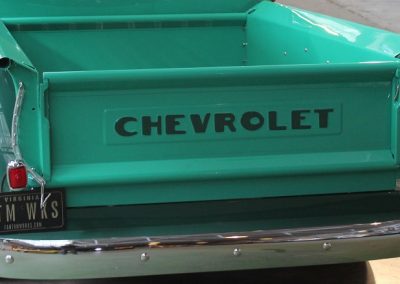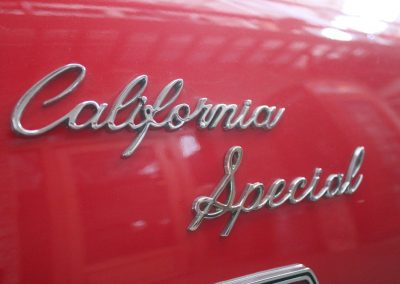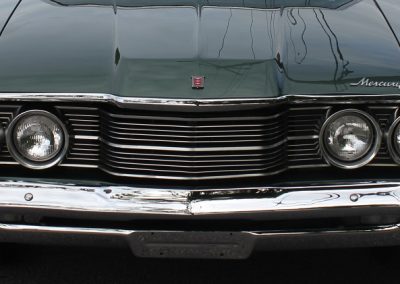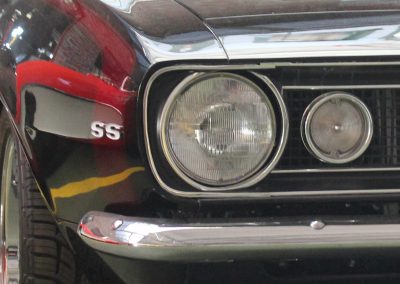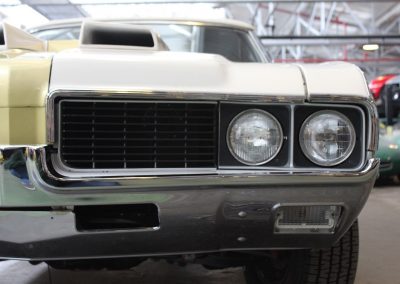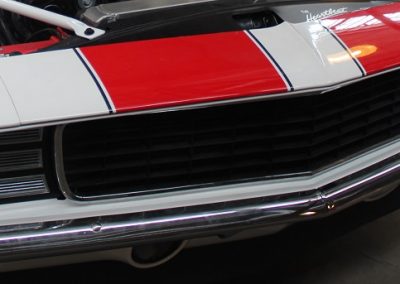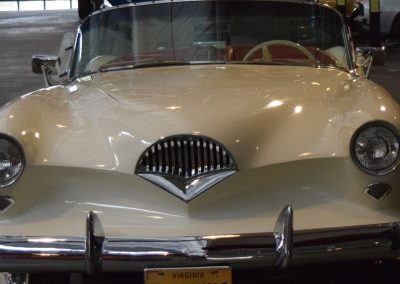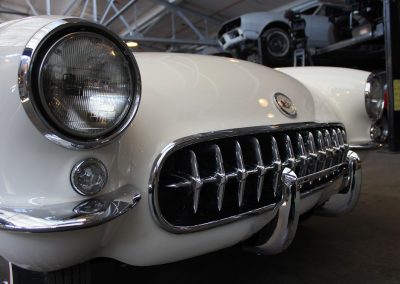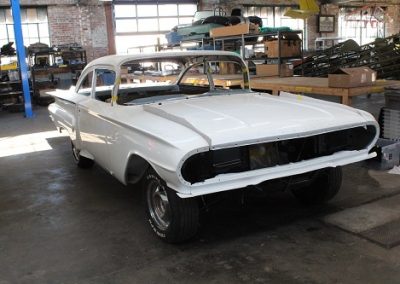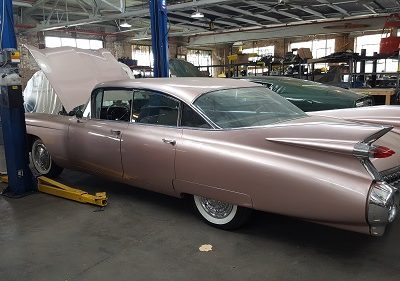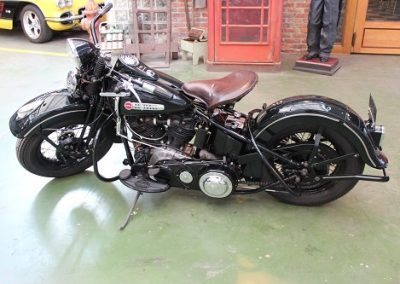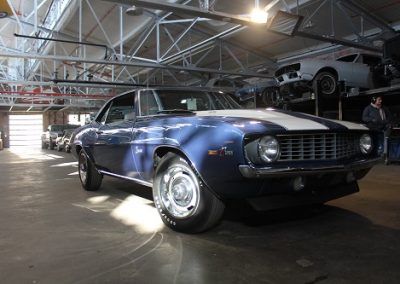1963 Chevrolet Corvette Split Window Coupe

As seen on Season Seven of FantomWorks
Owner Insight:
Explore the Project Galleries
Arrival
Strip & Metal Fab
Mechanical
Body & Paint
Trim & Detail
Finish
The Chevrolet Corvette (C2) (also known as the Chevrolet Corvette Sting Ray) is the second generation of the Chevrolet Corvette sports car, produced by the Chevrolet division of General Motors for the 1963 to 1967 model years.
The first-ever production Corvette coupe, a futuristic fastback, sported an unusual styling element for its time period – a divided rear window. The rear window’s basic shape had been originally conceived by Bob McLean for the Q-model. The rest of the Sting Ray design was equally stunning. Quad headlamps were retained but newly hidden – the first American car so equipped since the 1942 DeSoto. The lamps were mounted in rotating sections that matched the sharp-edged front end with the “eyes” closed. The Corvette continued to use hidden headlamps until the C6 model debuted in 2005. Coupe doors were cut into the roof, which made entry/exit easier in such a low-slung closed car. Faux vents were located in the hood and on the coupe’s rear pillars; functional ones had been intended but were cancelled due to cost considerations. The fastback design was later adopted by another GM car, the third-generation Buick Riviera that debuted in 1971, with the “Boattail” nickname applied to the larger Buick design.
The Sting Ray’s interior carried a new interpretation of the twin-cowl Corvette dash motif used since 1958, It was also more practical, now incorporating a roomy glovebox, an improved heater, and the cowl-ventilation system. A full set of round gauges included a huge speedometer and tachometer. The control tower center console returned, somewhat slimmer but now containing the clock and a vertically situated radio. Luggage space was improved as well, though due to a lack of an external trunklid, cargo had to be loaded behind the seats. The spare tire was located at the rear in a drop-down fiberglass housing beneath the gas tank (which now held 20-US-gallon (76-litre; 17-imperial-gallon) instead of 16-US-gallon (61 l; 13 imp gal). The big, round deck emblem was newly hinged to double as a fuel-filler flap, replacing the previous left-flank door.
Though not as obvious as the car’s radical styling, the new chassis was just as important to the Sting Ray’s success. Maneuverability was improved thanks to the faster recirculating ball, or “Ball-Race”, steering, and a shorter wheelbase. The latter might ordinarily imply a choppier ride, but the altered weight distribution partly compensated for it. Less weight on the front wheels also meant easier steering, and with some 80 additional pounds on the rear wheels, the Sting Ray offered improved traction. Stopping power improved, too. Four-wheel cast-iron 11-inch drum brakes remained standard but were now wider, for an increase in effective braking area. Sintered-metallic linings, segmented for cooling, were again optional. So were finned aluminum drums, which not only provided faster heat dissipation (and thus better fade resistance) but less unsprung weight. Power assist was available with both brake packages. Evolutionary engineering changes included positive crankcase ventilation, a smaller flywheel, and an aluminum clutch housing. A more efficient alternator replaced the old-fashioned generator.
The 1963 Corvette Sting Ray not only had a new design, but also newfound handling prowess. The Sting Ray was also a somewhat lighter Corvette, so acceleration improved despite unchanged horsepower. For the 1963 model year, 21,513 units would be built, which was up 50 percent from the record-setting 1962 version. Production was divided almost evenly between the convertible and the new coupe – 10,919 and 10,594, respectively – and more than half the convertibles were ordered with the optional lift-off hardtop. Nevertheless, the coupe wouldn’t sell as well again throughout the Sting Ray years. In fact, not until 1969 (by which time the coupe came with removable T-tops) did the closed Corvette sell better than the open one. Equipment installations for 1963 began reflecting the market’s demand for more civility in sporting cars. The power brake option went into 15 percent of production, power steering into 12 percent. On the other hand, only 278 buyers specified the $421.80 air conditioning; leather upholstery – a mere $80.70 – was ordered on only 1,114 cars. The cast aluminum knock-off wheels, manufactured for Chevy by Kelsey-Hayes, cost $322.80 a set, but few buyers checked off that option. However, almost 18,000 Sting Rays left St. Louis with the four-speed manual gearbox – better than four out of every five.
All 1963 cars had 327cid engines, which made 250 hp standard, with optional variants that made 300 hp, 340 hp and 360 hp. The most powerful engine was the Rochester fuel injected engine. Options available on the C2 included AM-FM radio (mid 1963), air conditioning, and leather upholstery. Also available for the first time ever on a Corvette was a special performance equipment package the RPO Z-06, for $1,818.45. These Corvettes came to be known as the “Big Tanks” because the package initially had a 36.5-US-gallon (138 l; 30.4 imp gal) gas tank versus the standard 20-gallon for races such as Sebring and Daytona. At first, the package was only available on coupes because the oversized tank would not fit in the convertible.
New for the 1963 model year was an optional electronic ignition, the breakerless magnetic pulse-triggered Delcotronic, first offered by Pontiac on some 1963 models.























